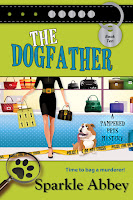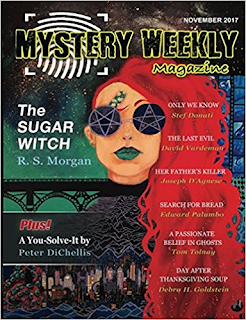Decluttering – The Time Has Come
by Sparke Abbey
 This past year we’ve learned a thing or two about decluttering and downsizing. In this era of minimalism, we don’t need as much “stuff” as we might have once believed. And just as we didn’t want to inherit a menagerie of ceramic owls or metal butterflies from our mothers, our children weren’t interested in our amazing book collections, stylish size-seven shoes, or cabbage soup tureen.
This past year we’ve learned a thing or two about decluttering and downsizing. In this era of minimalism, we don’t need as much “stuff” as we might have once believed. And just as we didn’t want to inherit a menagerie of ceramic owls or metal butterflies from our mothers, our children weren’t interested in our amazing book collections, stylish size-seven shoes, or cabbage soup tureen.
Three garage sales, and more trips than you can count on one hand to local donation centers, we not only decluttered our own homes, we downsized Abbey’s parents’. The process took time, was hard work, yet highly rewarding. And in a crazy way, reminded us of editing or “decluttering” our stories.
Like the rest of America, you’ve certainly heard about Marie Kondo’s “Tidying Up method.”
- Commit yourself to tidying up.
- Imagine your ideal lifestyle.
- Finish discarding first. Before getting rid of items, sincerely thank each item for serving its purpose.
- Tidy by category, not location.
- Follow the right order.
- Ask yourself if it sparks joy.
Six easy steps, right? Heck, the first two don’t even require physical action. But here’s the reality—the process is never that simple. While the KonMari lifestyle doesn’t “spark joy” for everyone, there are some principals that can be applied to storytelling. So we thought we’d put our spin on Marie’s six steps and create the Sparkle Abbey writing decluttering method.

- Commit yourself to unclutter your story. You have to be ruthless. Don’t be afraid to put your writing under a microscope and edit.
- Keep in mind the story you wanted to tell. This will serve as your compass as you unclutter your story. Everything must enhance the story or bring it “joy.” If not, it has to go.
- Declutter by category.
- Plot – Does your story structure make sense? Are there plot holes? Do your scenes unfold in a way that escalates conflict? Are all the plotlines resolved at the end of the story?
- Subplots – Do your subplots enhance the plot and relate to the overall story goal? Are there too many subplots?
- Characters – Do your characters serve a purpose? Do they have goals, motivation? Do they bring conflict? Are there too many characters? Are the characters unique?
- Clarity and Concise – How’s the pacing? Are you showing or telling the story? Is there too much or too little description? Is there too much or too little dialogue?
- Does your story spark joy? – You’ve carefully decluttered your masterpiece. Does it still bring you joy? It should. Remember step number two. Be careful that you don’t edit the life out of your story.
This isn’t a comprehensive list, but it’s a good start to tidy up your story. Whether you’re tidying up your home or your writing, the process requires you to make a judgment on what is important and what’s just “stuff” taking up space.
Have you jumped on the “tidying up” wagon? We’d love to hear any tips you have for organizing your home or your story!
 Anita Carter, who write the national best-selling Pampered Pets cozy mystery series. They are friends as well as neighbors so they often get together and plot ways to commit murder. (But don’t tell the neighbors.)
Anita Carter, who write the national best-selling Pampered Pets cozy mystery series. They are friends as well as neighbors so they often get together and plot ways to commit murder. (But don’t tell the neighbors.) 



